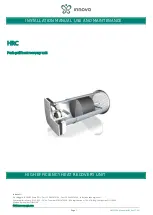
Page 114
Appendix B: System Maintenance
Inspections
The system should be inspected at least once per year. At each inspection:
Check the control unit for obvious signs of damage to the case or its lid.
Check the action of the tamper switch.
Check, and if necessary, replace the standby battery(ies).
Check other devices for obvious signs of damage.
Test the action of all buttons.
Clean the surface and display of the control unit and each radio keypad using a
clean, soft, dry cloth. Do not use water, solvents or any proprietary cleaning
materials.
Where applicable, check cabling for signs of damage or wear.
Monitor the signal strength and battery condition of all detectors, radio keypads,
remote controls, radio HUDs and radio sounders. Test each device. Replace
batteries as recommended by the device instructions.
Gently clean the lenses of any PIRs with a clean, soft dry cloth. Do not use water,
solvents or any proprietary cleaning materials.
Walk test all detectors.
Test any external sirens and strobes.
Replacing or removing devices
Note:
Make sure that you remove all power from the system before physically
disconnecting any device.
Removing a GSM plug-on module
If you wish to remove a GSM plug-on module, ensure that you disable communications
first in the appropriate menus (such as in the
Communications
–
SMS
menus). Otherwise,
the control unit will continually report a communications failure.
Removing a micro-SD card
Before removing a micro-SD card from the control unit, you must use
System Options/SD
Card/Safely Remove Hardware
. After re-inserting the card, select
System Options/SD
Card/Enable Hardware
. Failure to use this procedure may corrupt the card or cause it to
malfunction.
Using LEDs for diagnostics
You may notice an LED on the PCB of a device flashing unusually. Please refer to the
device's installation instructions for the meaning of each LED.










































